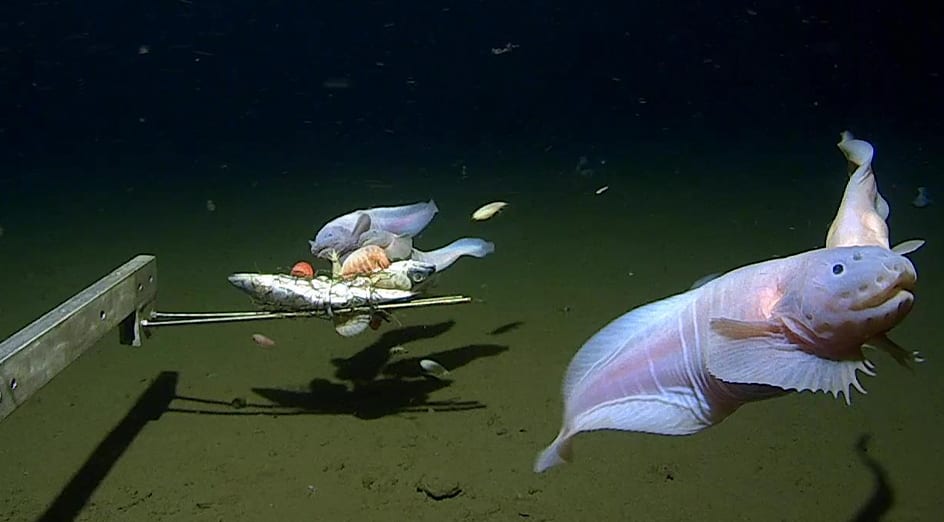
In a remarkable feat of marine exploration, scientists from Australia and Japan have captured on camera a previously unknown snailfish species, setting a new record for the deepest-dwelling fish ever — both captured and filmed.
This groundbreaking discovery occurred in the Izu-Ogasawara Trench, south of Japan, at an astonishing depth of 27,349 feet (8,336 meters). This expedition surpasses the previous record of 26,830 feet (8177 meters), achieved by a Mariana snailfish near Guam in 2017.
Into the Abyss: A Groundbreaking Expedition
The expedition, conducted in 2022 over two months aboard the DSSV Pressure Drop, aimed to explore three deep trenches in the northern Pacific Ocean. These included the Ryukyu trench, the Japan trench, and the Izu-Ogasawara trench, with depths ranging from 23,950 feet (7,299 meters) to an incredible 30,511 feet (9,299 meters). The research was part of a decade-long study investigating deep-sea fish populations and their habitats.
The team’s dedication bore fruit when they captured images of an elusive snailfish in the Izu-Ogasawara Trench, south of Japan. The previously unknown fish of the genus Pseudoliparis was captured on camera at a record-setting depth of 27,349 feet (8,336 meters). Only two days later, researchers successfully collected two other snailfish in traps from the Japan trench at 26,318 feet (8,022 meters), marking the first time fish have been caught from such extreme depths. These snailfish, named Pseudoliparis belyaevi, were previously observed at a depth of 25,272 feet in 2008. It was a good day for fishing.
University of Western Australia marine biologist Alan Jamieson expressed his awe at the richness of life found in the Japanese trenches.
“The Japanese trenches were incredible places to explore; they are so rich in life, even all the way at the bottom,” Professor Jamieson said.
“We have spent over 15 years researching these deep snailfish; there is so much more to them than simply the depth, but the maximum depth they can survive is truly astonishing.”
“In other trenches such as the Mariana Trench, we were finding them at increasingly deeper depths just creeping over that 8,000 m mark in fewer and fewer numbers, but around Japan they are really quite abundant.”
Jamieson, who also discovered the 2017 record holder, deployed baited cameras in the deepest parts of these trenches to lure deep trench fish.
Despite the vibrant population of deep-dwelling fish, the solitary Pseudoliparis individual found by the researchers was a small juvenile. This is intriguing as young snailfish typically reside at greater depths than adults, a trait that is uncommon in other deep-sea fish.
Previously, Jamieson authored a study that concluded it is likely biologically impossible for fish to survive at depths comparable to those of these catches. Ten years and more than 250 deep-sea deployments later, the Scottish marine biologist has thoroughly refuted his own hypothesis. A true scientist.
“The real take-home message for me, is not necessarily that they are living at 8,336 m but rather we have enough information on this environment to have predicted that these trenches would be where the deepest fish would be. In fact, until this expedition, no one had ever seen nor collected a single fish from this entire trench,” Professor Jamieson said.









